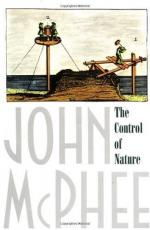
|
| Name: _________________________ | Period: ___________________ |
This test consists of 5 multiple choice questions, 5 short answer questions, and 10 short essay questions.
Multiple Choice Questions
1. In the mid-1800s, the United States Congress passes a Swamp and Overflow Land Act to:
(a) Take away ownership rights.
(b) Deed swampland to individual states.
(c) Evict land squatters.
(d) Create a new water control system.
2. The livelihood of approximately how many people is affected by the Old River Control?
(a) 3 million.
(b) 3 thousand.
(c) 31 thousand.
(d) 13 hundred.
3. While aboard the Mississippi on his annual trip, General Sands tries to:
(a) Capture poachers.
(b) Settle differences.
(c) Fine environmentalists.
(d) Generate new contracts.
4. Throughout the book, a predominant theme is that the following gets in the way of man's plans:
(a) The economy.
(b) Environmental Protection Agency.
(c) Nature.
(d) Machinery.
5. The Old River Control began its operations in what year?
(a) 1931.
(b) 1988.
(c) 1963.
(d) 1917.
Short Answer Questions
1. Congress mandates that the U.S. Army Corps of Engineers survey the Mississippi and tributaries in order to assure and improve what?
2. Atchafalaya is a what?
3. Every thousand years or so, the Mississippi River goes through a major shift that leaves behind what?
4. The author asserts that due to floods in the region, Louisiana loses how much land each year?
5. In the early days of New Orleans, residents build their homes on what?
Short Essay Questions
1. What are some of the main points the author tries to make through this work of historical nonfiction?
2. The Old River Control project began operating in 1963. What happens ten years later?
3. What is the goal of the U.S. Army Corps of Engineers with regards to the Atchafalya and Mississippi rivers?
4. Throughout the 1700s and 1800s, what did people in southern Louisiana do to protect their communities and land against floods?
5. Name some of the companies and industries that are attracted to the regions in and around Baton Rouge and New Orleans as these communities develop.
6. Explain who thinks the Old River Control project is an arrogant enterprise, and why they think this.
7. In 1927, what happened to the region of the Mississippi River during the great flood?
8. In the 1700s, why did people settle in New Orleans and surrounding areas despite the region clearly being a floodplain?
9. Who is Henry Shreve, and what does he do?
10. Describe what McPhee writes about Morgan City, Louisiana.
|
This section contains 924 words (approx. 4 pages at 300 words per page) |

|




